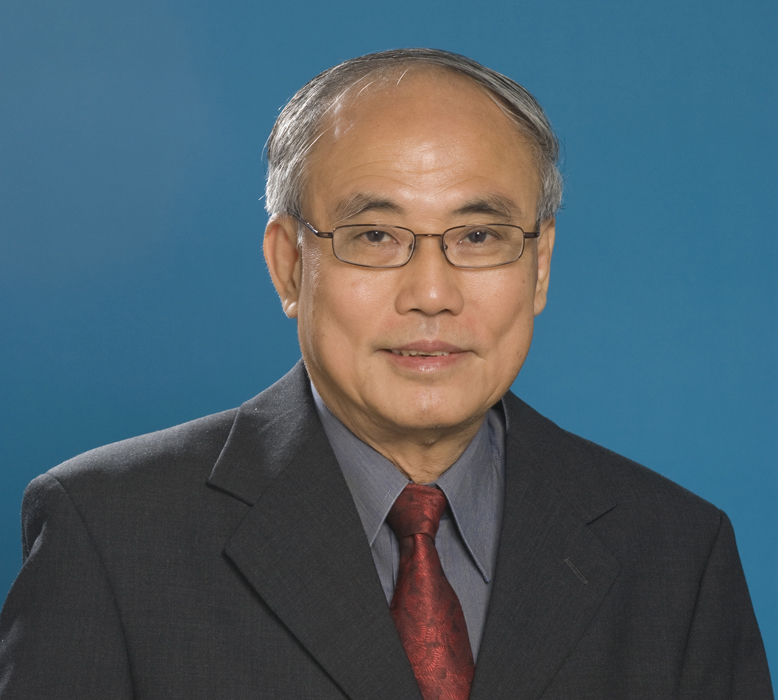President's Message
Message 25/2019
The months of July and August were busy ones. 2nd VP Dr Koh Hock Seng and I visited various government authorities as mentioned in my preceding message (No. 24). On July 10, I gave a talk on the quest for land in Singapore at the HEAD Foundation. On the same evening I was invited to appear on CNA at their 10 pm news to discuss the topic.
This was followed three days later when the radio talk show host, John Yip, interviewed me on the 938 Radio program. On July 30th Ms Chor Khieng Yuit of Money Mind (another Media Corp division) interviewed me. On & August Ms Lu Linzhi, of the Chinese news media Zao Bao invited me to explain why floating solutions is good for the environment; in particular could it help combat climate change. HEAD Foundation kindly made all the arrangements for which the Society is deeply grateful.
The talk at HEAD Foundation was about repurposing large swathes of land in Jurong and Tuas, currently used as for shipbuilding, conversion and petrochemical industries. These are industries that have served Singapore well in the past five decades but are not as relevant today as they once were. Ship repairing, conversion and rig building are land and labour-intensive industries. They were appropriate in the three decades of our early industrialisation journey, when unemployment was a critical economic issue. Extensive land reclamation was possible simply by levelling the hills of Jurong and filling up the mangrove swamps then commonly regarded as waste land.
History shows in the US, UK, Europe, Japan and South Korea shipbuilding on average lasts less than five decades before succumbing to global competition. The new leader in shipbuilding, China, is also feeling the impact of their rising cost of labour and many of their shipyards have tanked. The competition for Singapore yards, apart from China, are Indonesia, Vietnam, India and Malaysia. With their vast land and labour resources at a fraction of the cost of Singapore’s the threat they pose is real.
Petrochemical industry was promoted aggressively. Singapore in the 1960s proudly boasts the fact that Shell had one of its largest refineries in the East on the island of Bukom. Leveraging on that reputation, an entire island (Jurong Island) of 32 sq. km reclaimed from the shallow waters was set aside for the development of petrochemical industries.
Worked commenced in the 1970s and over the years it attracted massive investments internationally. The world has changed. A number of countries in the region have jumped on to the hydrocarbon processing bandwagon: notably Malaysia with Saudi Aramco as partner. The RAPID complex just across the Strait of Johor is no different than the facilities at Jurong Island except that its footprint is three times as large and the cost of production possibly three times as low. The stunning “US$27-28 billion” investment shows their seriousness.
Today processing hydrocarbons is no longer a glamourous industry. It is land intensive and pollutive and its tank farms take too much land without adding much value to the product. It is time to revisit and repurpose the land that is Jurong Island. The going will get tougher as more countries enter the fray.
In a world fraught with unpredictable changes, investments are exposed to huge risks when government changes hand every five years or less with or without political legitimacy.
It is now possible and sensible to consider a movable structure -rather land- as a platform on which to construct a production facility. Such floating assets may be transported across national borders or even across oceans when it suits the stakeholders.
If Hyflux had chosen to build a floating desalination plant for Libya in 2009, it could have saved the company a huge headache when the Arab Spring swept across that part of the world in 2011. It could have chosen to build the floating plant in Singapore and deliver to Libya on completion after all payment terms have been satisfied. The contract could be written to include a provision allowing Hyflux to take full possession of the plant in Singapore. This is a common practice in shipbuilding.
Although Singapore has a stable political environment, there is still good reason for considering such an option. Political stability comes at a price. The cost gap between production in Singapore and another ASEAN country may be too wide. It would be reassuring to the stakeholders to know that when that gap cannot be sustained, they can within weeks reposition themselves to sites in Malaysia, Indonesia or Vietnam, to reduce production costs.
It would be a win-win for both investor and the Singapore government; the latter because it is desperately short of land. Space freed enable the economy to morph to 4IR industries. The new industries will produce higher yield per hectare of land as they can be accommodated in high rise structures.
The point was also made at the talk, that since the shipping industry is 85% dependent on transit cargoes, it is highly exposed to the winds of change. Transit cargoes bound for other ASEAN ports will in future be sufficiently voluminous to justify shipping direct to their end destination. Indonesia is expanding their port capacities by leaps and bounds and so would Vietnam. Inefficient port management can in these days be addressed by contracting it to third party port operators such as Hutchinson, PSA International, APM Terminal, and DP World.
Singapore needs to ‘creatively destroy,” to use a phrase made famous by Joseph Schumpeter, in order to release scarce land for more productive industries that are capable of going high-rise instead of single level production as in the case of petrochemical, shipyards and ports.
At the HEAD Foundation talk we also offered suggestions that other land intensive facilities including ports, military bases, golf courses, recreation parks and prison complexes be considered for relocation in the sea using floating concrete platforms. We also introduce our vision of a master plan of how the 700 sq.km of our territorial waters may be divided into four functional zones with consideration to maintain ease of access for large as well as small ships and boats. This scheme will be described in greater detail in my subsequent messages.
President
Lim Soon Heng
10 August 2019


